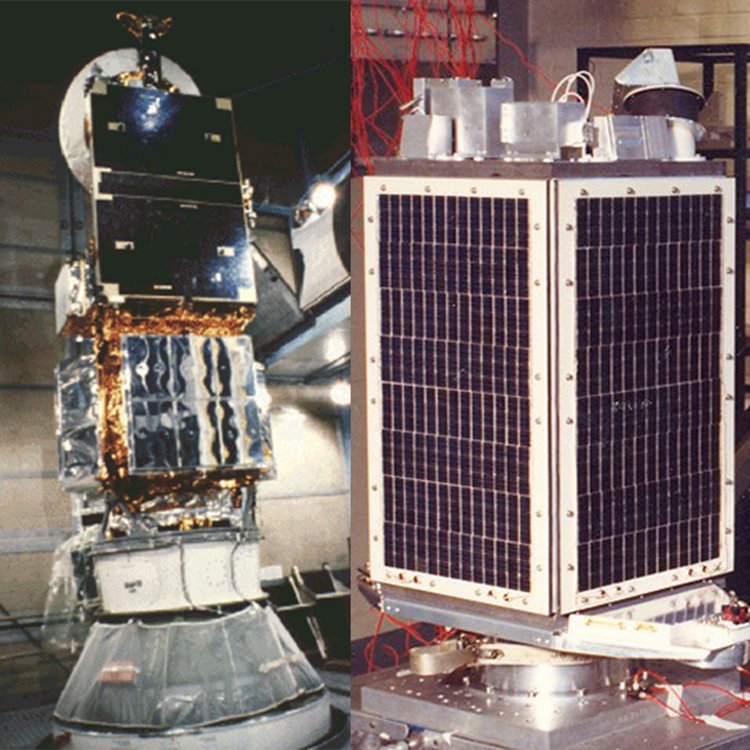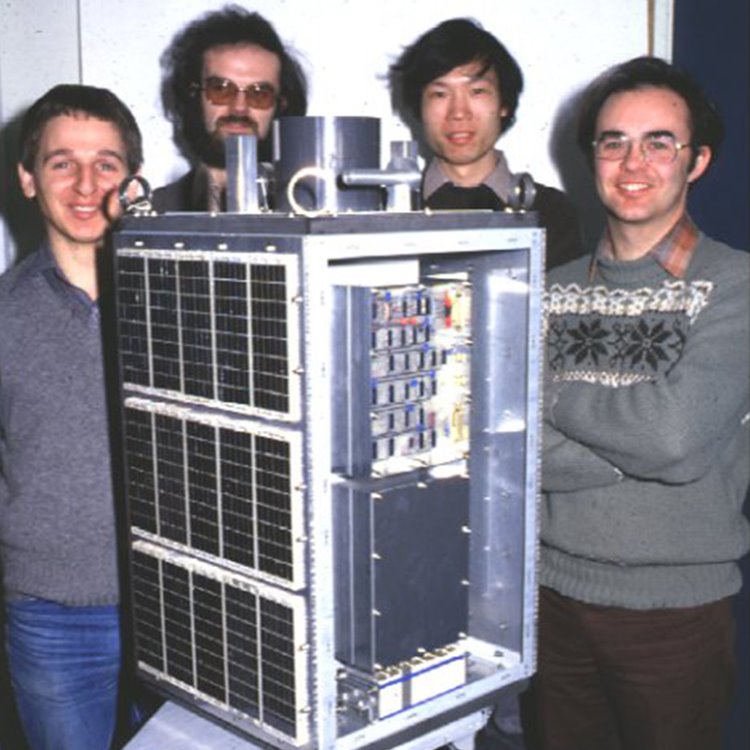UoSAT-2: Launched 1984
UoSAT-2 was the second satellite from the University of Surrey and carried the first operational digital Store and Forward communications payload, a telemetry downlink at 148.825MHz 1200bps, a prototype CCD camera, and an S-band beacon operating at 2401.5MHz.
UoSAT-2 played an important role in the Soviet-Canadian 1988 Polar Bridge Expedition (also known as SkiTrek) which began on March 3, 1988 when a group of thirteen Russian and Canadian skiers set out from Siberia in an attempt to ski to Canada over the North Pole. The nine Russians and four Canadians reached the Pole at the 25th of April where they were welcomed by a group of dignitaries from the Soviet-Union and Canada, members of the international press and radio amateurs involved in support and communications.
The daily progress of the skiers was followed by many thousands of school children and radio amateurs all around the world, who listened to the voice synthesizer on board the UoSAT-2, which transmitted the latest known position of the expedition in FM on the two meter VHF Amateur Radio band, using digitised voice, and through progress reports, produced regularly by AMSAT-NA which were distributed world-wide through Amateur Packet Radio and orbiting amateur satellites.

